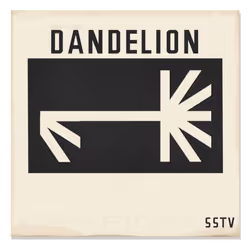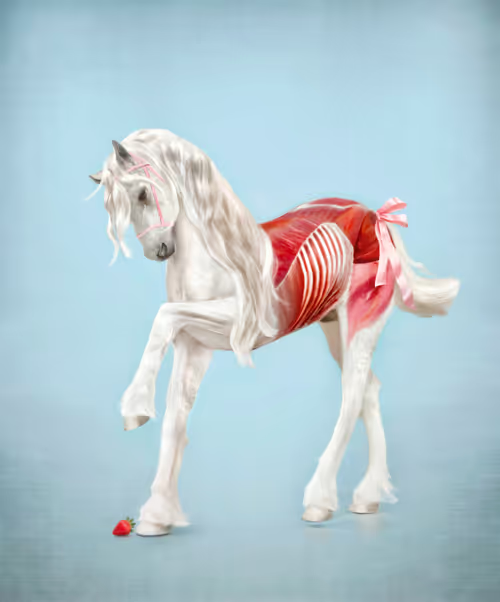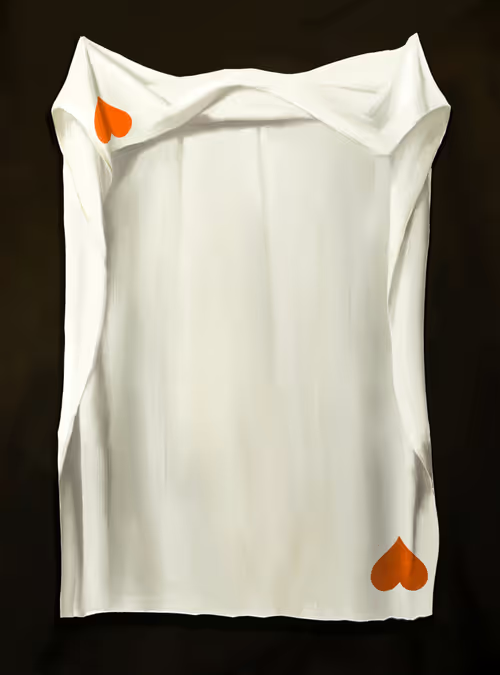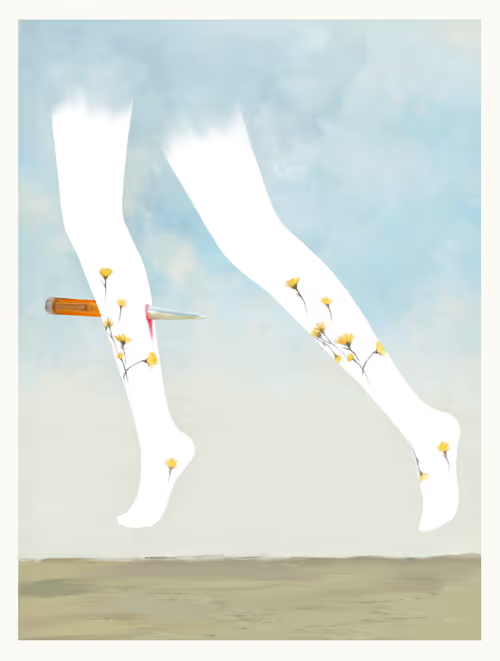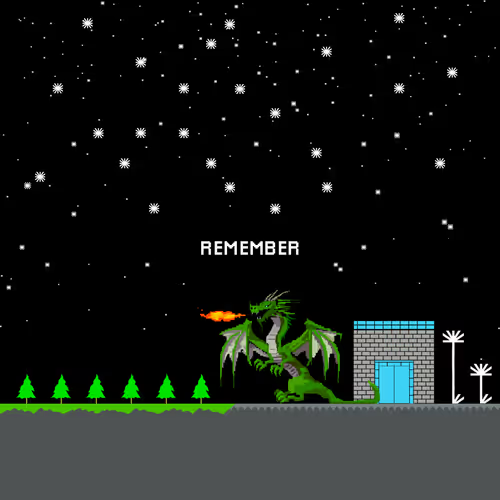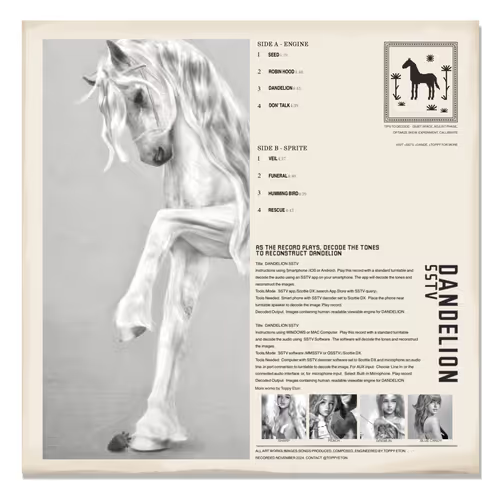

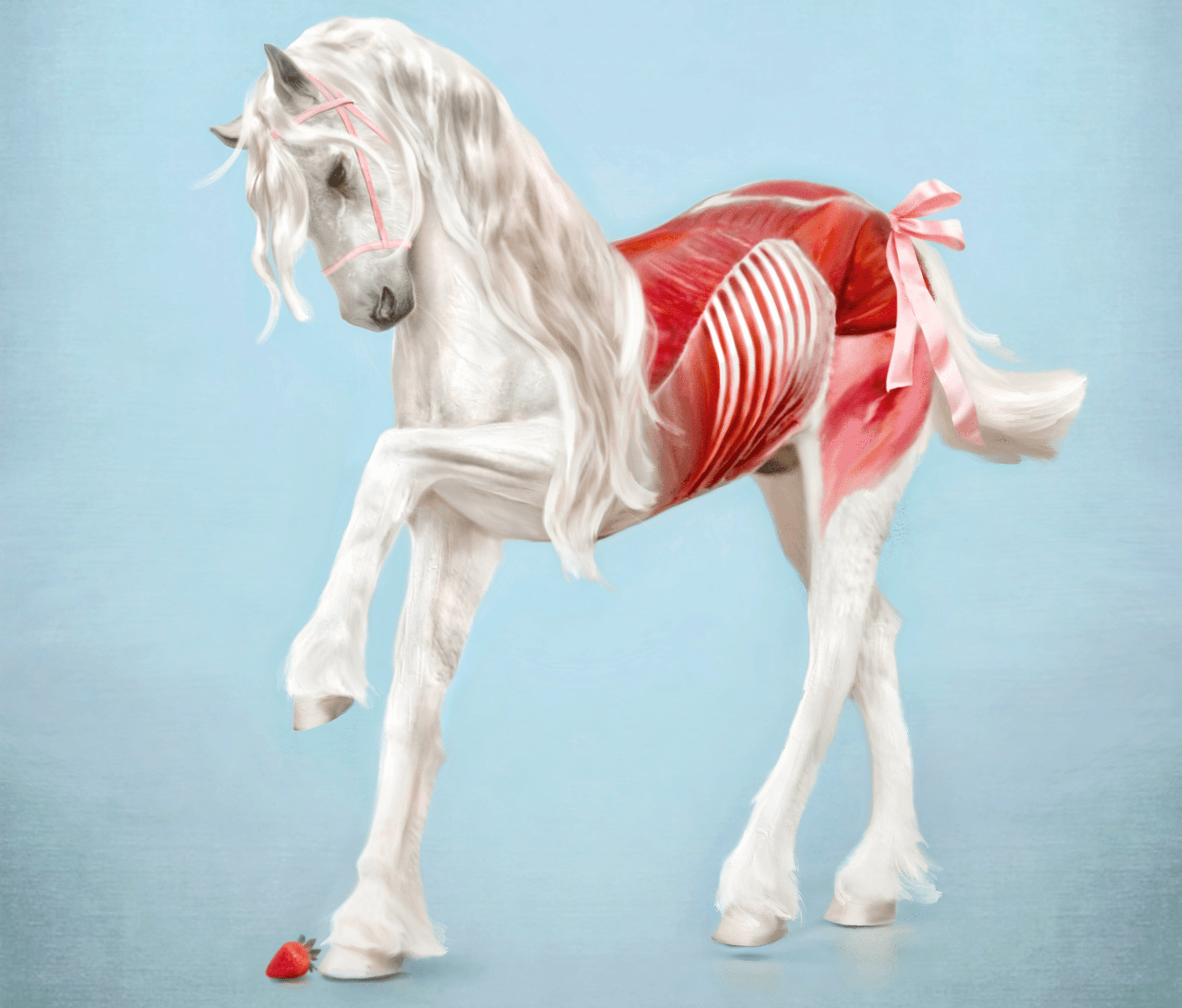
What remains when time erodes intent? When all that’s left of art, memory, or a person are fragmented traces - data caught between shifting technologies? Dandelion SSTV explores these questions, continuing my investigation into preservation, memory, and the paradox of permanence.
Dandelion is an story of fragmentation - of art, memory, and cultural moments. It focuses on the ways in which we transmit knowledge, both analog and digital, in a world where permanence is an illusion. (I spent half my childhood staring at the stations of the cross - we will return to this).
Throughout my art, I’ve explored ways to suspend time - drawing inspiration from the glass coffin of Snow White, the Faberge eggs created for the Romanov family of Russia, the wax anatomical models of sculptor Clemente Susini, and the lost fabric samples of Marie Antionette’s wardrobe - all archives of provenance. Dandelion extends this mission, blending the lifecycles of nature, the resilience of digital storage, and the “forgotten” transmissions of Slow-Scan Television (SSTV). Like the Faberge egg, delicate and enduring, Dandelion juxtaposes the fragile with the indestructible, ultimately we decide what survives and what is lost.
Chapter One Dandelion SSTV lays the foundation for a larger narrative - a world overgrown with dandelions, where people have disappeared, and their presence lingers as unseen technology. It is a study in digital ethnobotany, where SSTV broadcasts, Arweave Decentralized Storage, and a vinyl record act as digital “seeds”, ensuring that even in technological disaster, art and memory could take root. This project begins with digital paintings paired with their SSTV generated audio tones (each tone holding encrypted visual data). Each piece serving as a fragment or seed to the greater story.
Like the dandelion scattering seeds to the wind, Dandelion embraces dispersion as preservation.
The “engine” of Chapter One re-emerges in Chapter two - where episodic graphic novel panels give form to the echoes of the past and future. This isn’t just a story about technology, it’s about how we chose to remember.

“The dandelions were particularly successful: their fluff was natural and fixed on a golden thread with a small uncut diamond. The shining points of the diamond among the white fluff were marvelously successful and prevented this artificial flower from being too close a reproduction of nature.” Franz Birbaum, Fabergé head workmaster, 1919
The House of Faberge, established in 1842, became renowned for lifelike botanical creations crafted from crystal, gold, enamel. Their beauty lay in their rarity, with many pieces lost to time, smuggled from Russia, or hidden in private collections.
Queen Elizabeth, the Queen Mother, once said her Fabergé florals brought comfort during World War II: “It was so enchanting to see this charming and so beautifully unwarlike plant starting to tremble when most horrible things were approaching.”
Dandelions share this paradoxical duality - fragile yet lasting. Their seeds drift great distances, reducing competition and increasing survival odds. Even with harsh conditions, a few seeds will find soil. This combination of long-range dispersal and dormant resilience ensures their success.
“The way to love anything is to realize that it may be lost.”
The ongoing hunt for lost Faberge mirrors this - scattered, but not forgotten..
Dandelion SSTV explores this paradox of permanence, suggesting that fragility only deepens our appreciation for what endures.

"In my exploration of digital art, I have come to value not just stories and culture, but preservation of the data that defines our shared history. As technology accelerates there is an emphasis on permanence and record keeping - older technologies may hold lessons that can shape our ideas of permanence."
SSTV, developed in the 1950’s, transmits still images over radio frequencies. Used in Nasa missions and emergency communications, SSTV is valued for its ability to transfer images over long distances without internet infrastructure. SSTV encodes images into audio tones, each tone representing a pixel’s colour and brightness. On the receiving end, a decoder receives the audio tones and decodes them back into an image. The image exists only as long as the signal is received - if not not recorded or deciphered, it vanishes. This fleeting nature mirrors the volatility of digital art, where data loss can result from corruption, shifting technologies, or server failures.
For Dandelion SSTV, I encoded digital paintings as audio signals, preserving them in two formats:
Physical: Pressed onto a master vinyl record for analog longevity
Digital: Stored on Arweave for blockchain-based permanence.
This dual approach safeguards against both digital obsolescence and physical decay. Using SSTV’s shortwave method, I encoded digital paintings into audio tones via an iOS app, preserving the “seeds” both on vinyl and minting them to Arweave.
Arweave promises indefinite data access. Through Manifold, these audio-encoded artworks are minted, ensuring their survival in a future where today’s tools may become obsolete.
“EARTH IS A TASK GARDEN” - DIGITAL ETHNOBOTANY
Ethnobotany, the study of human-plant relationships, documents traditional plant knowledge before it’s lost due to modernization. It bridges botany, anthropology, and history. Digital Ethnography, meanwhile, examines human interactions in digital spaces. Digital Ethnobotany (or perhaps filebotany?), hypothetically, merges these two fields, treating data like a cultural species - its survival dependent on storage and transmission.
In Dandelion SSTV, digital “seeds” symbolize data transmission, safeguarded through decentralized storage and analog SSTV encoding. This ensures that the knowledge - art, data, essence -is preserved in a way that can resist both physical and digital decay.
Dandelion SSTV is not just about preserving art, it’s about ensuring the survival of creative expression itself.
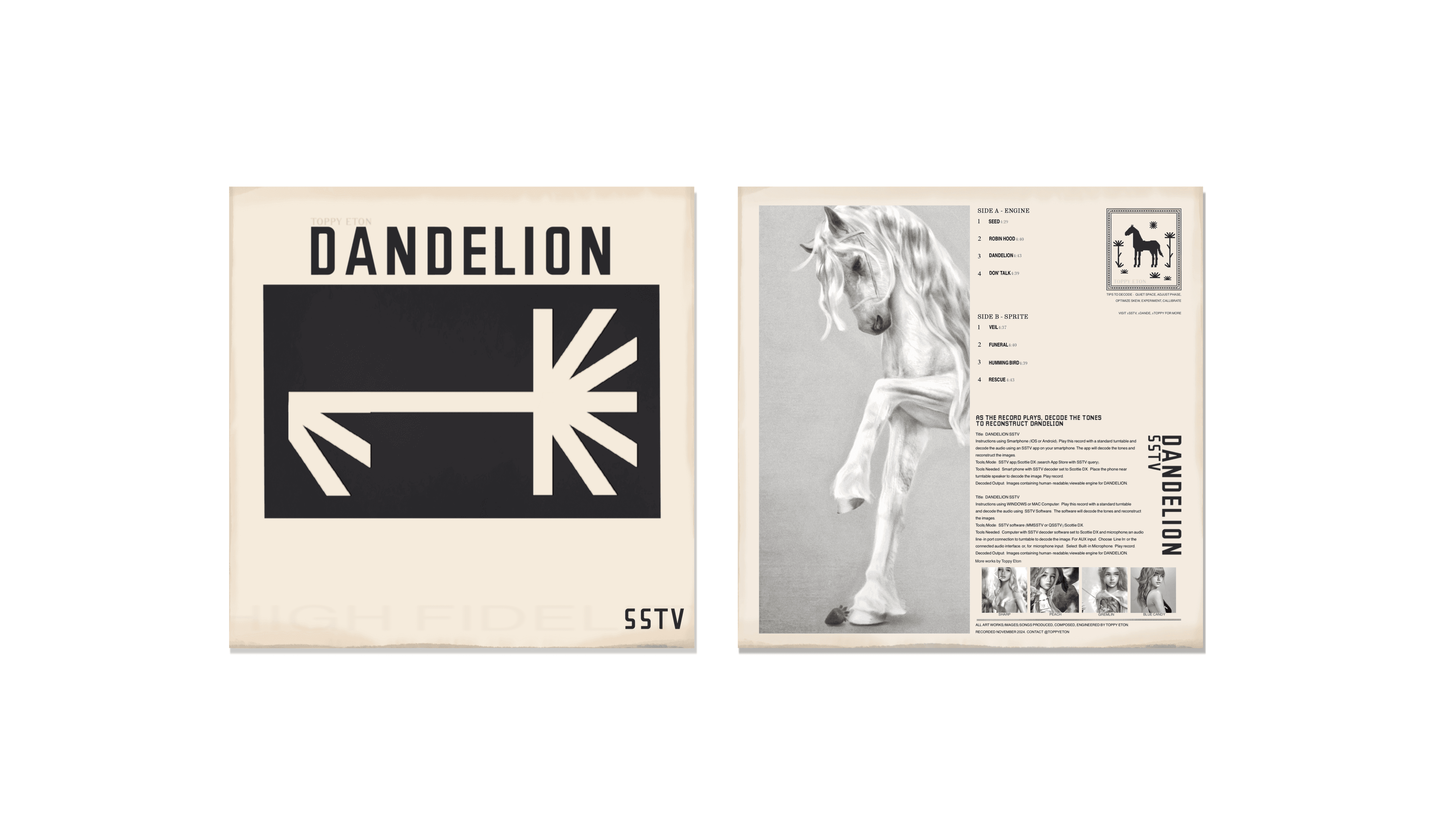

Dandelion SSTV vinyl record, physical media, recorded November 2024. Each side of this record contains coded data in the form of audio tones. These signals can be decoded into visual images when the output from the record player is processed by a device/computer configured for SSTV (Slow Scan Television) using the Scottie DX mode. The original images (pre-encoding), with their corresponding audio tones, are also permanently minted to Arweave for decentralized preservation.
Dandelion SSTV demonstrates how art can be transmitted/stored using Slow Scan Television (SSTV) protocols. Different mediums and environmental factors will impact signal fidelity and image quality - similar to the lifecycle of the dandelion.
Direct Digital Transmission (Phone-to-Phone)
This video shows a direct transmission of an image using an SSTV application, the audio tone encoding the image is played from one mobile device and received by another in close proximity via sound waves (mimicking radio waves used by traditional ham radio operators (amateur radio).With this controlled digital environment, minimal signal degradation occurs - the encoded audio remains consistent, resulting in a high-fidelity decoded image (demonstrating optimal conditions for SSTV transmission where factors such as frequency response, amplitude stability, and ambient noise are at minimum). Direct Digital Transmission (Phone-to-Phone) video sped up x7 for viewing.
This second video shows the transmission of the same SSTV audio tone played from a vinyl record on a turntable received by the SSTV app.
The analog nature of vinyl introduces forms of signal degradation: noise from turntable vibrations, motor noise, and imperfections such as dust and scratches; frequency limitations - vinyl records have limited frequency range compared to digital audio; and variations in playback speed can cause time based distortions in the audio signal leading to skewed/stretched images.
To enhance the quality of the decoded images: Optimization Incrementally adjust the phase setting to synchronize the scan timing if image appears misaligned. Fine tune the skew control to correct the vertical alignment. Reduce environmental noise by minimizing ambient noise during reception (noise-canceling environments and position the receiver microphone close to the speaker).
Dandelion SSTV highlights the differences between digital and analog signal transmission, how each medium and user affects the integrity and preservation of encoded data. - experimenting with the SSTV app’s signal correction tools we reveal the fragility of data.
Like the dandelion dispersing seeds, the original form shifts as it travels, leaving behind both recognizable traces and unexpected mutations/generations. By interacting with the SSTV app, you become part of this process - choosing whether to restore the image or embrace its altered state.
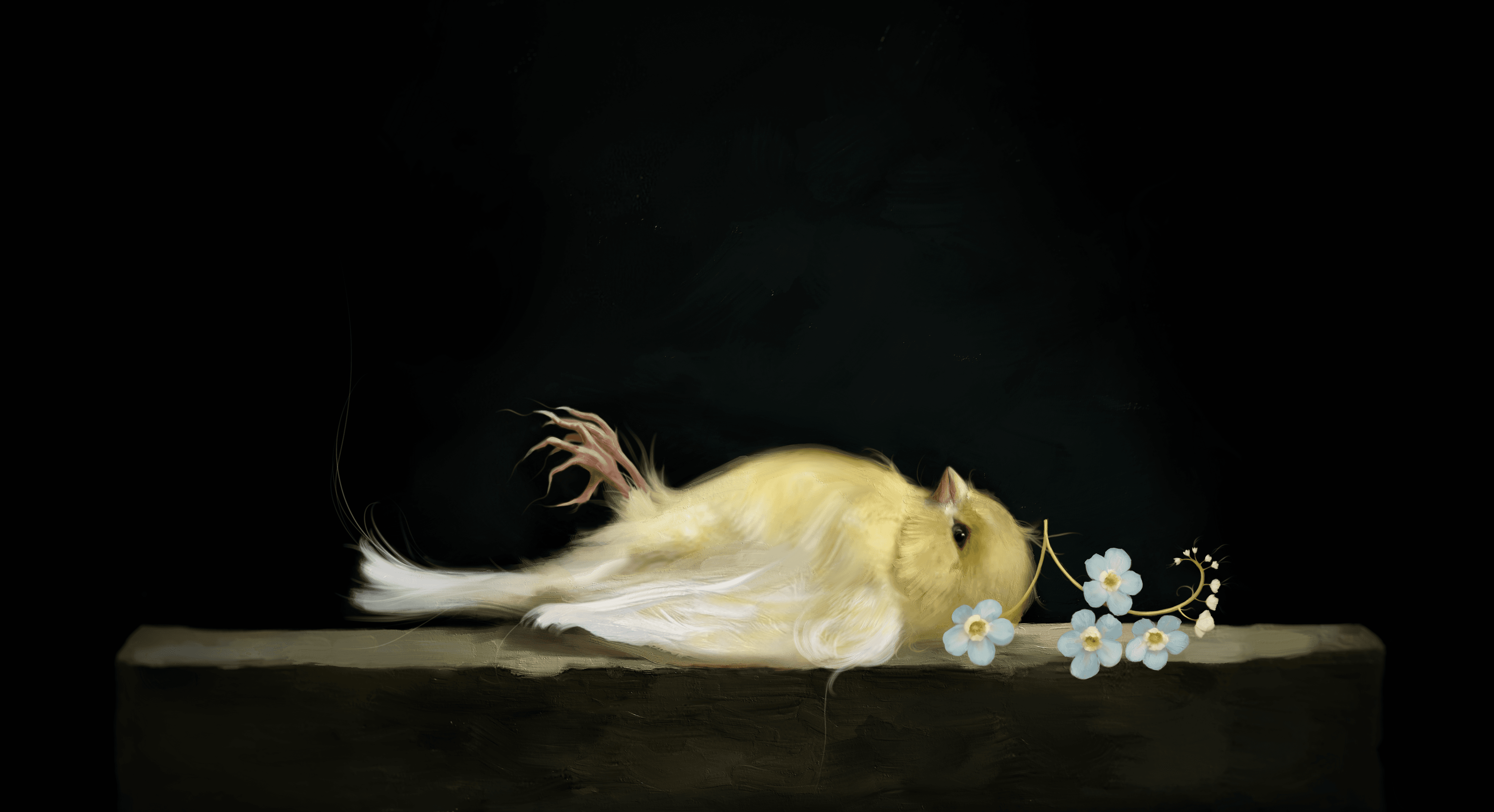

Dandelion SSTV studies preservation - taxidermy, memory, and a lost world. It examines what survives and what fades. questioning permanence in an era where both data and material culture are at risk of vanishing. Encoding images into sound waves, transmitting them through open frequencies, and reconstructing them on the other side is a form of resurrection. Without a receiver, the image stays hidden - Dandelion imagines a world where people accept technology without realizing the cost of its existence.
CHAPTER TWO - A STORY IN PANELS AND NEW DIMENSIONS: While Dandelion SSTV explores preservation and the paradox of permanence, Chapter Two will transform these concepts into story. Stay tuned.
To transmit is to trust in the wind.


